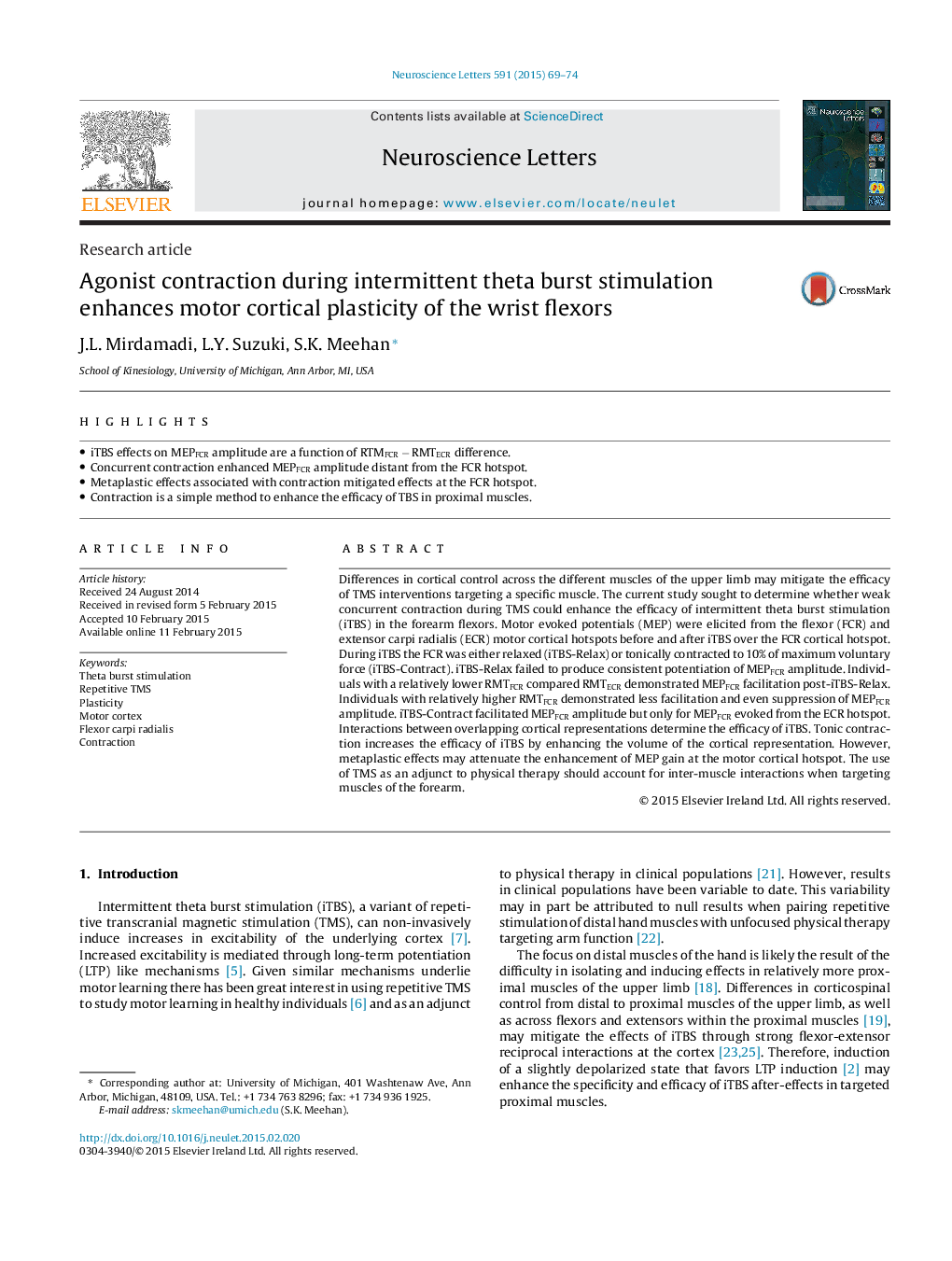| Article ID | Journal | Published Year | Pages | File Type |
|---|---|---|---|---|
| 6280870 | Neuroscience Letters | 2015 | 6 Pages |
Abstract
Differences in cortical control across the different muscles of the upper limb may mitigate the efficacy of TMS interventions targeting a specific muscle. The current study sought to determine whether weak concurrent contraction during TMS could enhance the efficacy of intermittent theta burst stimulation (iTBS) in the forearm flexors. Motor evoked potentials (MEP) were elicited from the flexor (FCR) and extensor carpi radialis (ECR) motor cortical hotspots before and after iTBS over the FCR cortical hotspot. During iTBS the FCR was either relaxed (iTBS-Relax) or tonically contracted to 10% of maximum voluntary force (iTBS-Contract). iTBS-Relax failed to produce consistent potentiation of MEPFCR amplitude. Individuals with a relatively lower RMTFCR compared RMTECR demonstrated MEPFCR facilitation post-iTBS-Relax. Individuals with relatively higher RMTFCR demonstrated less facilitation and even suppression of MEPFCR amplitude. iTBS-Contract facilitated MEPFCR amplitude but only for MEPFCR evoked from the ECR hotspot. Interactions between overlapping cortical representations determine the efficacy of iTBS. Tonic contraction increases the efficacy of iTBS by enhancing the volume of the cortical representation. However, metaplastic effects may attenuate the enhancement of MEP gain at the motor cortical hotspot. The use of TMS as an adjunct to physical therapy should account for inter-muscle interactions when targeting muscles of the forearm.
Keywords
Related Topics
Life Sciences
Neuroscience
Neuroscience (General)
Authors
J.L. Mirdamadi, L.Y. Suzuki, S.K. Meehan,
